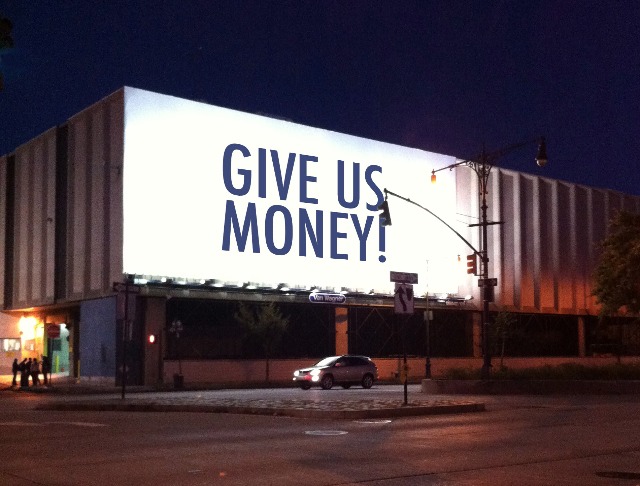Internet radio site Pandora, and the related streaming services Spotify, are both wonderful ways to discover and listen to music. They also share, give or take, the same business model: providing a free, ad-supported service, at the same time upselling users on an ad-free paid monthly subscription. This revenue is then used to pay the huge licensing fees required to legally acquire music content.
I think there are two problematic tensions with this business model, particularly when it comes to the advertising-supported subset, which accounts for the majority of the listeners and brings in the majority of the revenue.
Firstly, the listeners delivered to advertisers are not of very high quality. These are, in Pandora’s case, people who aren’t even willing to spend $3 monthly (yes, 10 cents a day!) to support the music that they listen to. Since a lot of advertising seems to be a battle over people’s disposable income, as an advertiser I wouldn’t find these “stingy” people attractive.
Alternatively, people who don’t want to purchase a subscription might be those who just don’t care about their tastes in music. Again, as an advertiser, I wouldn’t necessarily find these kinds of users attractive, since they are less likely to be the influencers who are critical to getting value out of advertising.

Secondly, in the free ad-supported model, removing the advertising becomes the focal point of getting a subscription. There are few value-added, positive features unlocked by subscribing, besides of a lack of interruptions. In this sense, there is a perverse (implicit) incentive at play to make the advertising as annoying as possible, since it creates the pressure to pay to make it “go away”. Indeed, as my Pandora subscription lapsed a few months ago and I’ve forgone renewing it, I’ve noticed that the quality of the advertising is sometimes quite low, and many times I’ve thought to myself, “how can I make this go away?” That’s a dangerous thing to have your users ask about aspects of your business — it can really disrupt any emotional attachments.
Now, I don’t claim to have some magic solution. Getting more subscribers seems like a smart thing to do, since having subscribers means more predictable revenue, even though some subscribers are certainly a net loss because of the sheer amount of music that they listen to. In spite of that risk, Pandora could definitely do is to make subscribing easier, to depend less on the lower-quality advertising-supported bracket.
In the iPhone app, subscription is tucked away behind an option labeled “Pandora One” in the settings menu. That’s troublesome because I’m sure most people don’t understand that Pandora One is the name of the subscription service, and it’s tucked away somewhere I wouldn’t necessarily think to look.

On the desktop client, it’s also a bit under-sold. The call to action for upgrading is muted to the point of looking like a terms of service link rather than something actionable.
Compared to radio audiences, who can easily skip out on commercials by just tuning to a different station, Pandora has a much more captive audience. But I’m left wondering whether the advertisers or the subscribers are the true customers, because it doesn’t seem like both groups are served equally well.